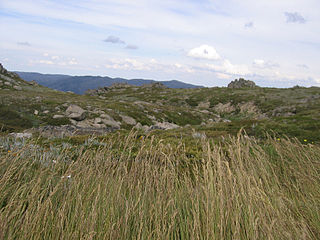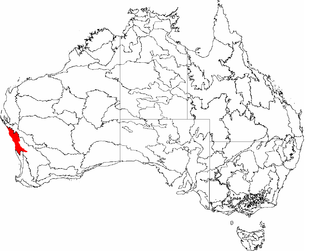 W
WThe Australian Alps montane grasslands is a montane grassland ecoregion of south-eastern Australia, restricted to the montane regions above 1300 metres.
 W
WThe Avon Wheatbelt is an Australian bioregion in Western Australia and part of the larger Southwest Australia savanna ecoregion.
 W
WThe Cumberland Plain Woodland is one of six main indigenous woodland communities of Sydney, New South Wales, Australia, that comprises an open tree canopy, a groundcover with grasses and herbs, usually with layers of shrubs and/or small trees. Situated in the Cumberland Plain, it is made up of dry sclerophyll woodlands, grasslands and/or forests, reminiscent of Mediterranean forests and temperate grasslands.
 W
WThe Mulga Lands are an interim Australian bioregion of eastern Australia consisting of dry sandy plains with low mulga woodlands and shrublands that are dominated by Acacia aneura (mulga). The Eastern Australia mulga shrublands ecoregion is coterminous with the Mulga Lands bioregion.
 W
WGeraldton Sandplains is an interim Australian bioregion of Western Australia and part of the larger Southwest Australia savanna ecoregion, as assessed by the World Wildlife Fund.
 W
WMarsupial lawns are portions of land where the soil moisture is much higher than in the vegetation surrounding it. These high moisture levels create lawns that attract a large amount of grazing by marsupials. Commonly found in Tasmania, the lawns function as habitats for local animals.
 W
WThe Southeast Australia temperate savanna ecoregion is a large area of grassland dotted with eucalyptus trees running north–south across central New South Wales, Australia.
 W
WThe Southwest Australia savanna is an ecoregion in Western Australia.
 W
WThe Victoria Plains tropical savanna is a tropical and subtropical grasslands, savannas, and shrublands ecoregion in northwestern Australia.
 W
WYalgoo is an interim Australia bioregion located in Western Australia, comprising 5,087,577 hectares.